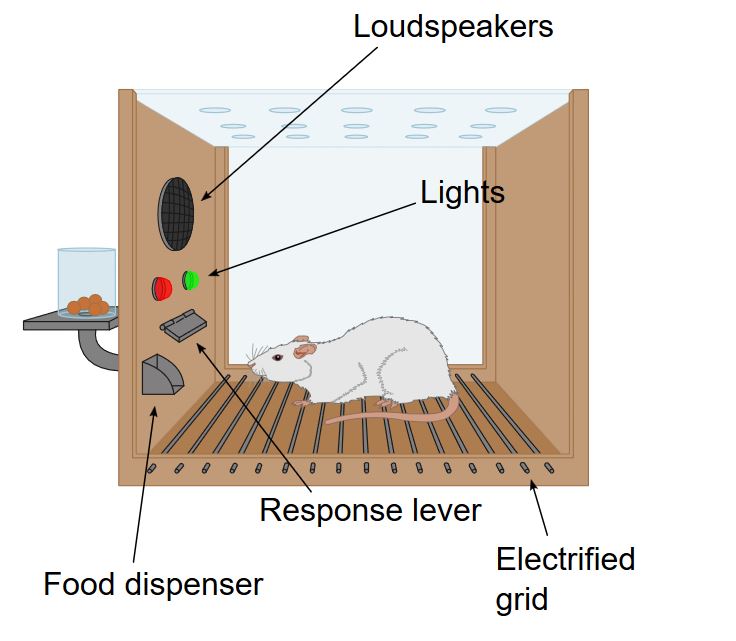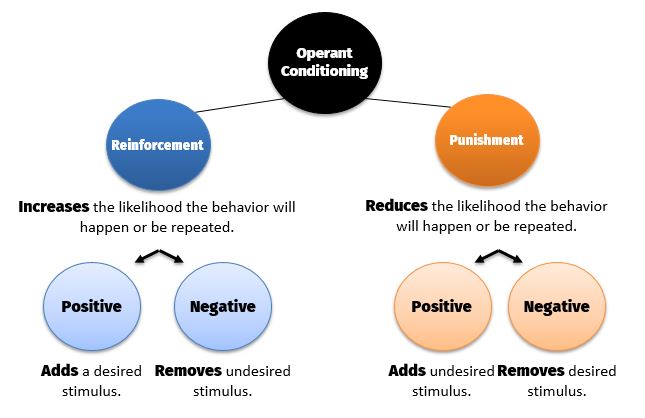My friend, tell me something: do you believe in free will? Do you consider that all of your behaviors are under your full control?
Here is a quote I really enjoy:
“We believe in free will, because we know our behavior. But not its causes.” This quote is credited to Jonathan Edwards, an American revivalist preacher, philosopher (1703 –1758).
As consumers, we make decisions almost on a daily basis, most of which we consider to be solely ours. But I am sorry to say, it is not always so. Our minds are permanently observing the environment we are in, judging the elements that surrounds us and being heavily impacted by them.
In this first article on the topic (Part 1), I would like to briefly explain to you the concept of operant conditioning, its characteristics and classifications. On Part 2, I will provide a series of examples of how marketing exploits these principles to influence human behavior in contexts of consumption.
But first, let us begin with a very important researcher: B. F. Skinner.
B.F. Skinner
Burrhus Frederic Skinner (famously known as B. F. Skinner) was an American psychologist, Professor of Psychology in Harvard. He was born in 1904 in Susquehanna (Pennsylvania, U.S.A.) and passed away on August 18, 1990 (aged 86).
Throughout his lifetime, Skinner developed an extraordinary body of work that helped immensely to explain human behavior. Among them, was an extremely important concept he helped refine, named: operant conditioning.

You see, Skinner defended that “free will” did not really exist. For him, almost all behaviors could be controlled, as long as one manipulated the external stimuli in the environment.
Skinner’s Box
The way Skinner used to explain how the manipulation of the environment is capable of influencing behavior, was by repeatedly testing it through a famous experiment which became know as”Skinner’s box”, or “operant conditioning chamber”.
Essentially, he developed an enclosed box where animals needed to perform tasks i order to receive rewards. For example, one version contained a bar (or lever) that an animal should press or manipulate in order to obtain food or water (which they enjoyed), for performing the task of pressing the lever or bar, for example.

In some cases, lights went off to inform the animal that food was available, and shocks were given (punishment) if the task was not conducted when intended (not pressing the lever when the food was available).
The experiment was replicated multiple times with a wide range of animals, including pigeons and rats. The key finding was almost always similar:
After multiple exposure and attempts, animals quickly understand that a desired reward will only be obtained if, and only if, the defined task is performed. And if the task is not performed, a punishment will follow. This way, behavior is eventually controlled and becomes predictable.
Here is a demonstration of Skinner’s famous experiment, and watch him comment it:
Reinforcements (rewards) and Punishments
Based on the Skinner’s box experiment, you can notice that operant conditioning works through a system of punishments and reinforcements (also called rewards). Each one serves a different purpose:
-
- Rewards (also called reinforcements): are applied whenever you would like a behavior to start, be repeated or continued.
- Punishments: are applied whenever a behavior should be avoided or stopped.
And how is this done exactly?
Well, both rewards and punishments can be conducted by adding or removing stimuli. They were called “Positive: when a stimuli s added” or “Negative: when a stimuli is removed”. This way, operant conditioning contains four main classifications:
-
- Positive Reinforcement (PR): a desired stimuli is added for a behavior to start or be repeated.
-
-
- Example: “Buy 3 tickets get 1 free“. A concert ticket at no cost is a desired stimuli for consumers. On the other hand, concert venues want fans to purchase many tickets. So the venues rewards you with an extra ticket as positive reinforcement for purchasing many of them.
-
-
- Negative Reinforcement (NR): an undesired is removed for a behavior to start or be repeated.
-
- Example: “Loyal fans skip the queue to enter the music festival“. Fans do not like waiting for long periods in long queues to enter venues. On the other hand, festivals want to have loyal fans, that attend every year and purchase products. So festivals can reward fans by removing the waiting time as negative reinforcement, for fans being loyal to them.
-
- Positive Punishment (PP): an undesired stimuli is added for a behavior to be avoided or stopped.
-
- Example: “Fans receive fines for getting into fights during a concert“. Fans do not like paying fines. On the other hand, festivals do not want fans to get into fights, as it ruins the experience for others and puts everyone around in danger. So festivals may apply a fine for troublemakers as positive punishment to stop or avoid aggressive behaviors.
-
- Negative Punishment (NP): a desired stimuli is removed for a behavior to be avoided or stopped.
-
- Example: “Fans lose their loyalty points for missing one edition of a festival“. Fans enjoy the loyalty points they accumulate after purchasing tickets and visiting concerts and festivals. On the other hand, festivals and venues do not appreciate when fans miss editions of the festival or go long periods without attending concerts. So festivals and venues may take away loyalty points as negative punishment to stop or avoid the low attendance behaviors.
-
- Positive Reinforcement (PR): a desired stimuli is added for a behavior to start or be repeated.
Got it? To help you even more, here is an illustration of the different classifications of operant conditioning:

Schedule of rewards
Nevertheless, in order for operant conditioning to happen, there is a very important detail: the scheduling of rewards.
Why? As discussed previously here on the site, the expectation and uncertainty of a reward enhances the dopamine system. The consequence is that it boosts the pleasure of a reward. So the greater the uncertainty, the more pleasurable is the expectation and satisfaction with receiving a reward.
So one very important factor in Skinner’s experiments was how he manipulated the scheduling of rewards (how often reinforcements were given by performing a task).
Here are some examples:
-
-
- Fixed Time: Reinforcements are given always at a certain time ratio.
-
- Example: salaries (reward after 30 calendar days), or vacation (after 11 months of work).
-
- Variable Interval: Reinforcements are applied with varying time-frames or, even at random.
-
- Example: verbal praise or gift-giving.
-
- Fixed Ratio: A specific amount of behaviors must be done in order for a reinforcement to be given.
-
- Example: coffee cards (free coffee after 10 coffees).
-
- Variable Ratio: There is no specific number of behaviors for when the reward will be given. It may happen at any point.
-
- Example: gambling or slot machines.
-
- Fixed Time: Reinforcements are given always at a certain time ratio.
-
And of no surprise: The higher the random the scheduling of a reward, the more effective it becomes.
These principles of scheduling of rewards are the base of a series of experiences, which have been developed for consumers. For example, casinos, video-games, slot machines and more. There are all grounded on the effectiveness of scheduling of rewards.
Main Assumptions and Characteristics of Operant Conditioning
My friend, so in order to conclude this first (and rather brief) article on operant conditioning, I would like to summarize four assumptions of the concept for you:
-
- First: that all human and animal behavior can be controlled and predicted. So you may want to reconsider your views on free will.
- Second: that the manipulation of behavior is done by manipulating the environment and creating a system of punishments and rewards. So pay attention next time you are at a shopping mall, at a supermarket or an online store.
- Third: that behaviors can be repeated by creating a system of reinforcements (also called rewards).
- Fourth: finally, that behaviors can be avoided by creating a system of punishments.
Fairly simple, but very powerful. And… effective!
Part 2: Marketing Applications
In this article I tried to explain to you the concept of operant conditioning, introduce you to B. F. Skinner, explain his famous experiment and the system of punishments and rewards.
But how is it exactly applied to humans? How does marketing take advantage of this concept in order to influence and predict human behavior?
I will discuss this with you on Part 2 of this topic. It will all be about marketing applications and examples.
Hope to see you there, my friend!





